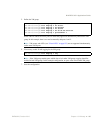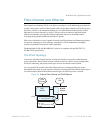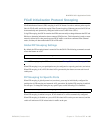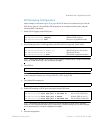
BLADEOS 6.5.2 Application Guide
192 Chapter 14: FCoE and CEE BMD00220, October 2010
Converged Enhanced Ethernet
Converged Enhanced Ethernet (CEE) refers to a set of IEEE standards designed to allow different
physical networks with different data handling requirements to be converged together, simplifying
management, increasing efficiency and utilization, and leveraging legacy investments without
sacrificing evolutionary growth.
CEE standards were developed primarily to enable Fibre Channel traffic to be carried over Ethernet
networks. This required enhancing the existing Ethernet standards to make them lossless on a
per-priority traffic basis, and to provide a mechanism to carry converged (LAN/SAN/IPC) traffic on
a single physical link. Although CEE standards were designed with FCoE in mind, they are not
limited to FCoE installations. CEE features can be utilized in traditional LAN (non-FCoE) networks
to provide lossless guarantees on a per-priority basis, and to provide efficient bandwidth allocation
based on application needs.
Turning CEE On or Off
By default on the G8124, CEE is turned off. To turn CEE on or off, use the following CLI
commands:
Effects on Link Layer Discovery Protocol
When CEE is turned on, Link Layer Discovery Protocol (LLDP) is automatically turned on and
enabled for receiving and transmitting DCBX information. LLDP cannot be turned off while CEE is
turned on.
RS G8124(config)# [no] cee enable
!
Caution—Turning CEE on will automatically change some 802.1p QoS and 802.3x standard flow
control settings on the G8124. Read the following material carefully to determine whether you will
need to take action to reconfigure expected settings.
It is recommended that you backup your configuration prior to turning CEE on. Viewing the file
will allow you to manually re-create the equivalent configuration once CEE is turned on, and will
also allow you to recover your prior configuration if you need to turn CEE off.


















